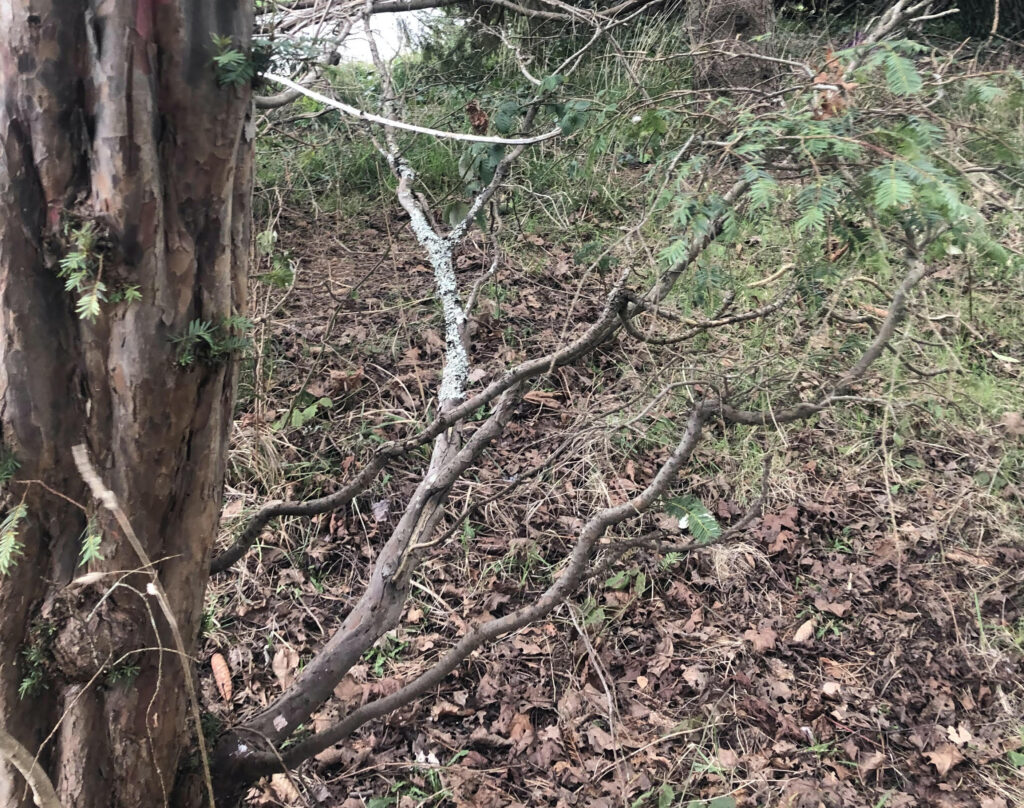Western (Pacific) Yew (Taxus brevifolia)

The Western (Pacific) yew (Taxus brevifolia) is a slow-growing tree species with a variety of interesting characteristics. Perhaps the most clear feature of the tree is its distinct, patch-like bark. These patches resemble purple scales over the red/purplish inner bark. Arguably, this bark could even resemble that of arbutus trees. The Western yew’s trunk may also be twisted. The tree grows to moderate heights on the Pacific coast, generally recorded between 2-15 m tall. Its shrubby, spreading and/or drooping branches give it a notable appearance. The 2 cm long needles are yellow-green to evergreen. They are flat, pointed and arranged somewhat twisted. Male trees yield yellow pollen cones, and females have round red “arils” (fruits) on the underside of the branches.

The Western yew was highly utilized for traditional material purposes by Indigenous Peoples. The wood is hard, heavy and resistant to decay, which meant that many items requiring durability could be made. Bows, paddles, digging sticks, mauls, wedges, utensils, bowls, snowshoes and carvings could all be created from the Western yew. The wood was also an important material for trading. Paint was also created from the ground wood. The inner bark was used in braiding and weaving and the dried needles were sometimes smoked.
Varieties of yew have been used through time in different places around the world to make items such as furniture, instruments and cabinetry. The Western yew was also made for Japanese ceremonial “Toko” poles. Today it is very useful for boat-decking and fence-posts.

The Western yew is found along the Pacific coast from southern Alaska to California, east to Alberta and through select interior regions of the U.S.. The species can live in a variety of soil moisture and nutrient conditions. In B.C., it is commonly found within coniferous forests; it is successful growing in the understory of conifers. In its range, depending on moisture and soil conditions, it can be found on slopes, near water sources, canyons, ravines, coves, lowlands or montane regions.
All parts of the yew tree are dangerously poisonous to humans. This does not include the flesh of the fruit but the seeds are still toxic. Contrastingly enough, the tree has provided important medical benefits in the past through the isolation of “paclitaxel”. This component lies in the bark and was used in cancer treatments before it could be synthetically produced. With such contrasting properties, It is clear to see that the Western yew is a fascinating tree in all of its habitats.
For more information, visit E-Flora B.C., Green Timbers Heritage Society, The Evergreen State College, Metchosin Civicweb, University of British Columbia and the Woodworking Network.


